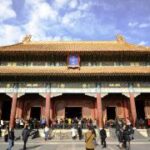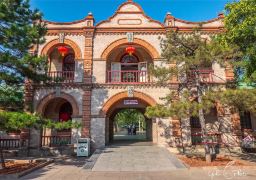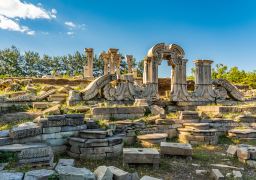The Mariinsky Ballet is one of the world’s most renowned ballet companies, with a rich history spanning over two and a half centuries, closely intertwined with the development of Russian dance.

In the early days of the establishment and development of Russian ballet art, foreign ballet masters played a significant role. By the end of the 18th century, renowned ballet masters such as Franz Hilverding, Gasparo Angiolini, Giuseppe Cigna, and Charles Lepic were working in St. Petersburg. However, in the 1790s, Russia’s first ballet master, Ivan Valberg, emerged as a prominent figure. He was employed by a pantomime ballet company and dedicated himself to presenting a wide range of subjects and creating vivid scenes in his works, with his ballet reflecting his views on the Napoleonic Wars holding a special place among his creations.
The history of St. Petersburg ballet in the 19th century was shaped by great artists such as Charles Didelot, Jules Perrot, and Arthur Saint-Léon. In 1869, Marius Petipa was entrusted with the role of Chief Ballet Master due to his significant enhancement of the company’s professional standards. His collaborations with composers Tchaikovsky and Glazunov on the classic works ‘The Sleeping Beauty,’ ‘Swan Lake,’ and ‘Raymonda’ represent the pinnacle of this great choreographer’s legacy.
From the dance virtuosos like Ekaterina Vazem, Marina Semyonova, and Galina Ulanova to the young performers just beginning their artistic careers at the Mariinsky, generations of ballet artists have showcased their extraordinary talents through these outstanding performances.At the turn of the 19th and 20th centuries, the Mariinsky Ballet Company was a cradle for a group of great ballet artists. Among them were Anna Pavlova, Mathilde Kschessinska, Tamara Karsavina, Olga Preobrazhenskaya, Olga Spessivtseva, Vaslav Nijinsky, Nikolai Legat, and Sergey Legat. These artists brought Mikhail Fokine’s avant-garde works to European audiences during the legendary ‘Russian Seasons’ in Paris, earning great acclaim for Russian ballet.
Following the Russian Revolution, the Mariinsky Theater faced a challenging period as most of its major artists left the company. However, the theater managed to preserve its classic repertoire during these difficult times. In 1922, Fedor Lopukhov took the helm as the company’s leader. His keen appreciation and bold innovations led to an enrichment of the company’s repertoire, with many works closely related to modern life being created during this era.
During this time, the Mariinsky Theatre was home to outstanding dancers such as Galina Ulanova, Alexei Yermolaev, Marina Semyonova, and Vakhtang Chabukiani. The ballet art of the 1930s was heavily influenced by dramatic arts, as seen in Rostislav Zakharov’s ‘The Fountain of Bakhchisarai’, Vakhtang Chabukiani’s ‘Heart of the Mountain’, and Leonid Lavrovsky’s ‘Romeo and Juliet’.
The 1960s marked a revival of the symphonic ballet tradition, with performances of works like Leonid Yakobson’s ‘Spartacus’ and ‘Ballet Miniatures’, Yuri Grigorovich’s ‘The Stone Flower’ and ‘Legend of Love’, and Igor Belsky’s ‘The Coast of Hope’ and ‘Leningrad Symphony’.The success of these works is undoubtedly inseparable from the exquisite performances of the Mariinsky dancers. Between the 1950s and 1970s, the troupe produced a group of excellent ballet artists, including Irina Kolpakova, Natalia Makarova, Alla Osipenko, Irina Hensler, Alla Sizova, Rudolf Nureyev, Mikhail Baryshnikov, Valeri Panov, Yuri Solovyev, and Anatoliy Sapogov. By the end of the 1970s, the Mariinsky’s repertoire included works such as ‘La Sylphide’ and ‘Napoli’ by August Bournonville, as well as smaller works by old choreographers like Perrot, Saint-Léon, and Coralli. Ballet masters such as Roland Petit and Maurice Béjart also frequently worked with the troupe. Today, the troupe’s repertoire includes not only classical ballet masterpieces by Petipa such as ‘Swan Lake’, ‘Raymonda’, ‘The Corsair’, ‘La Bayadere’, and ‘Sleeping Beauty’, but also works by contemporary great artists such as Mikhail Fokine, George Balanchine, Frederick Ashton, William Forsythe, Alexei Ratmansky, Angelin Preljocaj, and Wayne McGregor. Since 2001, the Mariinsky Theatre has been hosting the annual ‘Mariinsky International Ballet Festival’, where top dancers from first-class international ballet companies perform. Duration: 10/12-10/13, approximately 150 minutes (subject to the actual performance).









